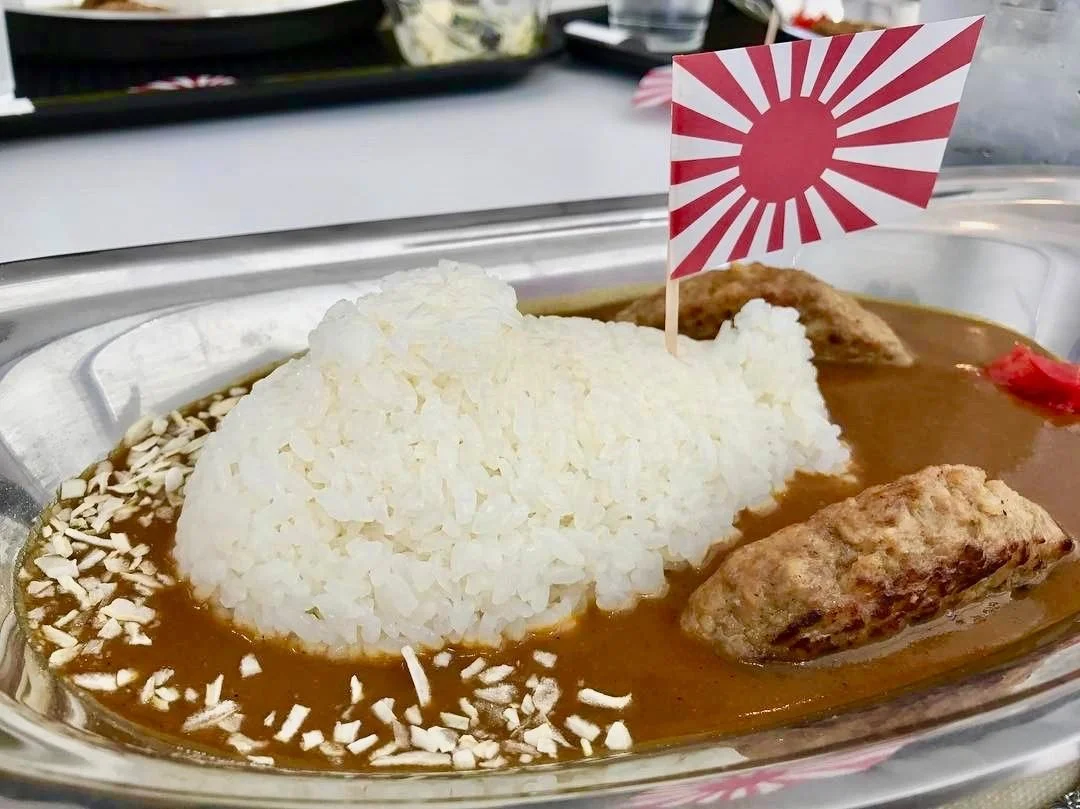How is Japanese Curry Different from South Asian Curries?
“Wtf is Japanese curry?” a thought that eventually opened the door to a whole new world for me about ten or so years ago. I think the first time I had Katsu curry was at Go! Go! Curry! in Times Square. Immediately, loved the idea: fried, crispy meat with a savory sauce/curry with rice and pickled veggies. I have to say though, this wasn’t the best rendition of Japanese curry I had. A local sushi restaurant is where I had a true introduction to delicious Japanese curry. Mitsuwa NJ’s canteen area also has really good Katsu curry. Undeniably, one bite in, anyone can tell why curry or curry rice is Japan’s ultimate comfort food and even more so, its national dish! But the name kind of gives it away how its fundamental origins have come from afar.
First and foremost, as many people know today, the word “curry” is a generalized term for gravy type dishes used by the British due to a linguistic misunderstanding with the local language during the colonization of India. The Portuguese, during their time in India, had their own version of the term curry too. But i’ll save that for another blog post because my ADHD friends, much like me, will get overwhelmed if they see an endless post of paragraphs. So it is evident that the term curry has spread from South Asia to other parts of the world and primarily through British influence.
After Japan’s period of isolation, the Meiji era focused on increasing foreign influence and domestic militarization as noted in an article from Atlas Obscura. Thus began the introduction of “yoshoku” or Western food to Japan. This includes curry, castella (a cake introduced by Portuguese), korokke (related to French croquette), katsu (inspired by the Wiener schnitzel), hanbagu steak (Hamburg Steak) and more. The journey of Japanese curry began with the British navy as they carried with them curry powder onboard and served curry as meals for the crew. There are different legends of how specifically curry got introduced but the fact remains the same that it was through the British navy. Also something else to point out is that during Japan’s isolation period there was a ban on meat due to religious beliefs rooted in Buddhism and Shintoism and limitations on land. A blog post from Diaspora Co blog post states that Emperor Meiji publicly ate meat in 1872 to lift the ban on meat since he wanted his people to become strong and healthy citizens like the “Western people”. That is why curry was the perfect choice. British curry always consisted of meat which is why they believed it was one of the best hearty meals to have for long voyages. The Japanese navy took note of this as they began to build up their naval army.
So the beginnings of curry are rooted in naval traditions and it spread even further because of Western style restaurants in Japanese cities. Curry culture rose to prominence after a major earthquake in 1923 devastated Tokyo as per an article from the Illinois Times. “Kare raise” or curry and rice stalls popped all over as a result of the earthquake, offering an inexpensive and hearty meal. Then in 1930, the Japanese company S&B started selling Hidori Brand Curry Powder which then became accessible to home cooks. Afterwards, around 1966, the same company released Golden Curry, a curry spiced shelf stable roux that came in a tiny block form - making Kare raise a quick and easy dish for all.
According to the Illinois Times, the curry powder that was introduced to Japan was the Crosse & Blackwell curry powder or C&B curry powder. This was the most popular curry powder brand in Britain and it is still manufactured today though the company was divested after it was purchased by Nestle. I wanted to see if I could find an ingredients list of all the spices in this C&B curry powder but I could not find one. Instead, I found a list of the spices used in the S&B “Oriental” Curry Powder, which I found on Amazon. The ingredients are as follows: turmeric, coriander, fenugreek, cumin, red pepper, black pepper, cinnamon, ginger, star anise, cloves, cardamom, fennel, nutmeg, laurel (bay) leaves, allspice and garlic. All the ingredients listed here are spices native to or either common in India/South Asia with the exception of allspice. Though people say that curry powder is a British invention, I would argue the credit given because all of these ingredients could potentially be spices for a masala (which is the proper way to say spice mix instead of curry powder when referencing South Asian cuisine). Also indentured Indian workers were taken to places like Guyana and Fiji carrying masalas with them which eventually became known as curry powders. But I’ll further dive into it more in another post. The ingredients in a Golden Curry block roux are as follows: Wheat flour, vegetable oils, salt, sugar, curry powder (spices previously listed), MSG, caramel color, malic acid, pepper, chili pepper, garlic, disodium guanylate, disodium inosinate, celery seed and mustard. So how different is Japanese curry from a South Asian curry? It’s pretty different…shocking. I mean I bet many people would have assumed so but it is also not wrong to include Japanese curry in the family tree of curries from around the world. From the taste and smell to the preparation and use of certain ingredients, Japanese curry has a distinct profile. Thus South Asian curries and Japanese curry have a shared ancestry but are more like extended cousins once removed or something like that.
Links to websites mentioned/referenced:
https://metropolisjapan.com/the-origins-of-japanese-curry/
https://www.vice.com/en/article/nepjbw/a-brief-history-of-how-curry-ended-up-in-japan
https://www.tastingtable.com/1247196/history-japanese-curry-rice/
https://wijapan.com/curry-the-unsung-hero-of-japanese-cuisine/
https://group.bishamon-ten.com/the-history-of-japanese-curry/
https://savorjapan.com/contents/discover-oishii-japan/the-charm-and-history-of-japanese-curry-one-of-their-national-dishes/
https://timesofindia.indiatimes.com/home/sunday-times/how-a-revolutionary-from-bengal-got-japan-hooked-to-indian-curry/articleshow/84928464.cms
https://gogocurryfranchise.com/the-japanese-curry-craze/
https://www.diasporaco.com/blogs/journal/japanese-curry-the-curious-journey-of-colonization-and-globalization-that-led-to-japan-s-favorite-dish
https://kome-academy.com/en/roots/meat.html#:~:text=In%201872%2C%20it%20was%20suddenly,Japanese%20people%20should%20eat%20meat.
https://www.japan-guide.com/e/e2351.html
https://www.atlasobscura.com/articles/japanese-curry-history
https://www.tokyoweekender.com/food-and-drink/why-india-is-not-the-birthplace-of-japanese-curry/
https://www.smitachandra.com/blog/2019/4/3/curry-in-japan
https://metimejp.com/unique-origins-curry/
https://japantoday.com/category/features/food/what-did-japanese-curry-taste-like-150-years-ago-this-instant-curry-pack-lets-you-find-out
https://one-from-nippon.ghost.io/indo-curry/
https://homegrown.co.in/homegrown-explore/how-india-gave-japan-its-beloved-katsu-curry
https://www.amazon.com/Curry-Powder-Oriental-85-Pack/dp/B0096BRED0
https://www.sbfoods-worldwide.com/products/search/005.html#:~:text=74880%2003005%201-,Ingredients,inosinate%2C%20Celery%20seed%2C%20Mustard.


